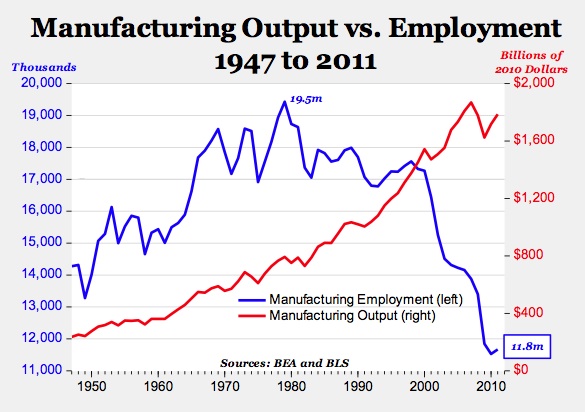I'm no Luddite. I understand that as machines increase productivity, society can compensate by consuming more and more goods and services thereby sustaining full employment.
To wit, in 1870, almost 50 percent of the U.S. population was employed in agriculture. Today less than 2 percent of the population is directly employed in agriculture; yet assisted by technology these few farmers produce enough food to sustain an obesity epidemic, wastage and export.
Another obvious example is US manufacturing which has grown about 3X in the last half century, even while manufacturing jobs have dropped 40%.

So now 80% of people work in services, and we see a never ending boom in restaurants, therapists, beauty salons, and other luxuries, successfully keeping employment high. We keep consuming more products and more services. We have bigger wardrobes and waste more clothes, eat out more, eat more, travel more, and fill our houses with junk.
So far so good. OK I'm not sure it's good (for us, or for the planet), but its good for the economy. However technology change is accelerating, and I always assumed that at some point the pace of technology change would outpace the ability of society to invent new luxuries and re-purpose our employees. In recent years, retails stores have been increasingly replaced by eCommerce, supermarket checkouts have gone person-less, passport control is automated. Everywhere we look there are machines where a person once stood. And still there is virtually no unemployment.
Any day now Waymo will offer truly driver-less taxis in Phoenix. Now 2% of Americans are drivers and in the coming years they may all be replaced by machines. Will we invent new luxuries fast enough to employ them all?
I'll reflect on that during my next bee string facial, which, I would expect, might be applied by an ex-truck driver.